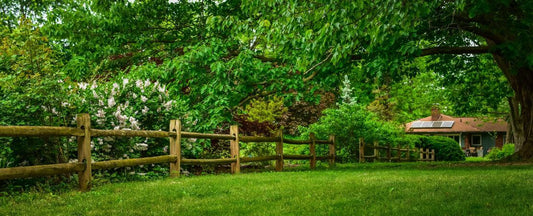What to Plant in That Small Space & Container Garden Tips

What to Plant in That Small Space?
How does it happen that a good sized yard can have spots that are too small for ordinary plants? So annoying! The space between the path and my fence is so narrow that, leaning into the path, the roses grab your sleeve and the cosmos drop seeds on your ankles as you pass by. What to do with these spaces?
The answer is to plant naturally compact plants!
I have three such spots. One is between my path and the neighbor’s yard, about a foot wide. It gets full sun for a few hours in the morning, but the houses shade it most of the day. I didn’t try plants that flower a lot, but rather, wanted something attractive and hardy. Sedge, carex pennsylvanica, should grow well there, but since sedge looks like a particularly healthy stand of grass, it was not interesting to me at the time. However, dead nettle, Lamium amplexicaule, is a spreading plant with soft, gray leaves and short stalks of purple flowers, giving me the look that I wanted. Considering the plants available now, I’d try coral bells, Heuchera, particularly ones with orangey or purplish leaves.
My narrow sunny dry spot runs close to the fence and faces southwest. Creeping phlox (Phlox subulata) and other species), an all-time favorite of mine, is gorgeous there. It spread to fill the space but barely gets 6” high. I love the hot-pink flowers.
Alternatives could be succulents like hardy ice plants (Delosperma) and stonecrops (Sedum species). These low succulents have really dramatic flowers, pink to white for ice plants, chiefly yellow for stonecrops. Ice plants have cute pointy green leaves. Stonecrops have rounder leaves that come in colors from bright green to deep red, making them attractive when not flowering.
My third kind of small space is that of plants in flower pots. I put potted plants beside the front door for color. The plants are in 9”-diameter pots because I worry that bigger ones will get bumped or bump us as we go in and out. I want plants with bright flowers that tolerate growing in a small space. A red geranium, genus Pelargonium, has been terrific. Other geraniums, genus Geranium, are great there too, flowering abundantly within the flower pot and draping slightly, gracefully, over the side of the pot by late summer. Also terrific in pots are taller speedwells (genus Veronica)and pinks (genus Dianthus)because they stay vertical and have showy, interesting flowers. Flower pots provide a wonderful way to grow those absolutely beautiful miniature calla lilies (Zantedeschia species), especially if your winter is too cold to leave them outside, since in a pot they can easily be brought indoors. Do remember that a small pot will dry out well before the soil, so do not wait until the yard is thirsty to water the potted plants.
Not all tiny spaces are best filled with short plants. If you want taller plants, consider ones with relatively stiff stalks that will not flop over, like catmint (Nepeta), lavender (Lavendula) and gladiolas (Gladiola)or compact shrubs like thornless Japanese barberry varieties (Berberis thunbergii) or miniature thujas(Thuja occidentalis).
There are many wonderful plants for small spaces; writing this I found myself wishing I had more small spaces to fill!
Planning Your Small Space Garden
- Assess Your Space: Whether it’s a yard space, balcony, windowsill, or a small patio, understanding the amount of sunlight and shade it receives is crucial. This will determine what plants will thrive in your garden.
- Go Vertical: When the ground space is limited, vertical gardening is an efficient way to utilize space. Wall-mounted planters, trellises, and hanging baskets are excellent for this purpose.
- Choose the Right Plants: Opt for dwarf varieties and plants that naturally have a compact growth habit.
Choosing the Right Container
- Container Variety: Use a mix of pots and containers of different sizes to add depth and interest to your garden. Ensure they have proper drainage to prevent waterlogging.
- Material Matters: Terracotta, ceramic, and plastic are popular choices. Terracotta and ceramic are porous, allowing soil to breathe, while plastic is lightweight and good for hanging plants and those plants you might move for winter, depending on your growing zone.
Growing Perennials in Small Spaces
- Compact Perennials: Choose perennials that are recommended for container growing. Find suggestions like this on our plant pages under “product details.”
- Seasonal Planning: Incorporate plants that bloom at different times to ensure your garden remains colorful and vibrant throughout the seasons.
How-To Tips for Small Space Gardening
- Soil and Fertilization: Use high-quality potting mix and ensure regular fertilization, as container plants can exhaust their soil nutrients more quickly.
- Water Wisely: Over-watering is a common mistake in small space gardening. Check the soil moisture and water accordingly. Self-watering containers can be a smart investment.
- Regular Pruning: Keep your plants healthy and bushy with regular pruning. This encourages new growth and prevents the garden from looking overgrown.
Make the most of the gardening space you have. With the right planning, container selections, and plant choices, you can transform any small space into a lush, green garden oasis.



